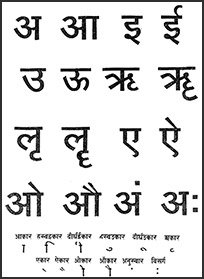Apya, Āpya: 18 definitions
Introduction:
Apya means something in Hinduism, Sanskrit, Marathi, biology. If you want to know the exact meaning, history, etymology or English translation of this term then check out the descriptions on this page. Add your comment or reference to a book if you want to contribute to this summary article.
In Hinduism
Purana and Itihasa (epic history)
Source: Cologne Digital Sanskrit Dictionaries: The Purana Index1a) Āpya (आप्य).—A Vājin.*
- * Vāyu-purāṇa 61. 25.
1b) A particular period of the day.*
- * Vāyu-purāṇa 66. 40.
1c) One of the gaṇas of the eight gods of the Cākṣuṣa epoch.*
- * Bhāgavata-purāṇa VIII. 5. 8; Viṣṇu-purāṇa III. 1. 27.

The Purana (पुराण, purāṇas) refers to Sanskrit literature preserving ancient India’s vast cultural history, including historical legends, religious ceremonies, various arts and sciences. The eighteen mahapuranas total over 400,000 shlokas (metrical couplets) and date to at least several centuries BCE.
Ayurveda (science of life)
Nighantu (Synonyms and Characteristics of Drugs and technical terms)
Source: WorldCat: Rāj nighaṇṭuĀpya (आप्य) or Āpyakṣetra refers to “watery land” and represents one of the five classifications of “land” (kṣetra), as defined in the first chapter (ānūpādi-varga) of the 13th-century Raj Nighantu or Rājanighaṇṭu (an Ayurvedic encyclopedia). Accordingly, “a land full of stones looking like half-moon and white lotuses, which is full or rivers and rivulets is called āpya or watery land”.
Substances (dravya) pertaining to Āpya-kṣetra are known as Āpyadravya—These dravyas are kaṭu (pungent), kaṣāya (astringent) ad cool in nature, hence allay the increased pitta-doṣa.
Unclassified Ayurveda definitions
Source: Wisdom Library: Āyurveda and botanyĀpya (आप्य) refers to “belonging to water”, “consisting of water”, or, “living in water”. The term is used throughout Ayurvedic literature such as the Suśruta-saṃhitā and the Caraka-saṃhitā.

Āyurveda (आयुर्वेद, ayurveda) is a branch of Indian science dealing with medicine, herbalism, taxology, anatomy, surgery, alchemy and related topics. Traditional practice of Āyurveda in ancient India dates back to at least the first millenium BC. Literature is commonly written in Sanskrit using various poetic metres.
Vyakarana (Sanskrit grammar)
Source: Wikisource: A dictionary of Sanskrit grammarĀpya (आप्य).—To be obtained by an activity: (the same as vyāpya). The term is used in connection with the object of a verb which is to be obtained by the verbal activity. The word आप्य (āpya) is found used in the sense of Karman or object in 8 the grammars of Jainendra, Śākaṭāyana, Cāndra and Hemacandra; cf. Cāndra II I. 43; Jainendra I. 2.119; Śāk.IV.3.120: Hem. III.3.31. Hence, the term साप्य (sāpya) is used for a transitive root in these grammars.

Vyakarana (व्याकरण, vyākaraṇa) refers to Sanskrit grammar and represents one of the six additional sciences (vedanga) to be studied along with the Vedas. Vyakarana concerns itself with the rules of Sanskrit grammar and linguistic analysis in order to establish the correct context of words and sentences.
Jyotisha (astronomy and astrology)
Source: Wisdom Library: Brihat Samhita by VarahamihiraĀpya (आप्य) is another name for Pūrvāṣāḍha, according to the Bṛhatsaṃhitā (chapter 15) (“On the nakṣatras—‘asterisms’”), an encyclopedic Sanskrit work written by Varāhamihira mainly focusing on the science of ancient Indian astronomy astronomy (Jyotiṣa).—Accordingly, “Those who are born on the lunar day of Pūrvāṣāḍha [i.e., āpya] will be of gentle manners; fond of sea-voyage, truthful, cleanly and wealthy; will delight in earth work; will be boatmen; will be dealers in fruits and flowers of water. [...]”.

Jyotisha (ज्योतिष, jyotiṣa or jyotish) refers to ‘astronomy’ or “Vedic astrology” and represents the fifth of the six Vedangas (additional sciences to be studied along with the Vedas). Jyotisha concerns itself with the study and prediction of the movements of celestial bodies, in order to calculate the auspicious time for rituals and ceremonies.
Biology (plants and animals)
Source: Google Books: CRC World Dictionary (Regional names)Apya in India is the name of a plant defined with Saussurea costus in various botanical sources. This page contains potential references in Ayurveda, modern medicine, and other folk traditions or local practices It has the synonym Aplotaxis lappa Decaisne (among others).
Example references for further research on medicinal uses or toxicity (see latin names for full list):
· Repertorium Botanices Systematicae (1843)
· Iconographia Cormophytorum Sinicorum (6700)
· Linnaea (1846)
· CIS Chromosome Inform. Serv. (1993)
· Compositae Indicae (1876)
· Archives de Botanique (1833)
If you are looking for specific details regarding Apya, for example extract dosage, chemical composition, side effects, diet and recipes, health benefits, pregnancy safety, have a look at these references.

This sections includes definitions from the five kingdoms of living things: Animals, Plants, Fungi, Protists and Monera. It will include both the official binomial nomenclature (scientific names usually in Latin) as well as regional spellings and variants.
Languages of India and abroad
Marathi-English dictionary
Source: DDSA: The Molesworth Marathi and English Dictionaryāpya (आप्य).—a S Obtainable or acquirable. 2 Relating to water; watery, aqueous.
Source: DDSA: The Aryabhusan school dictionary, Marathi-Englishāpya (आप्य).—a Obtainable. Relating to water, aqueous.
Marathi is an Indo-European language having over 70 million native speakers people in (predominantly) Maharashtra India. Marathi, like many other Indo-Aryan languages, evolved from early forms of Prakrit, which itself is a subset of Sanskrit, one of the most ancient languages of the world.
Sanskrit dictionary
Source: DDSA: The practical Sanskrit-English dictionaryApya (अप्य).—a. [apāṃ idaṃ tatra sādhu saṃskṛtam vā yat; adbhiḥ saṃskṛtam P. IV.4.134]
1) Connected with or coming from water. त्वया हितमप्यमप्सु भागम् (tvayā hitamapyamapsu bhāgam) Ṛgveda 2.38.7; watery; स ईं मृगो अप्यो वनर्गुरुप (sa īṃ mṛgo apyo vanargurupa) 1.145.5. consisting of, consecrated with, water (as haviḥ.)
2) Obtainable.
3) Active, connected with sacrificial acts.
--- OR ---
Āpya (आप्य).—a. [apāṃ idaṃ aṇ svārthe ṣyañ]
1) Watery.
2) Obtainable, attainable (āp-ṇyat).
-pyaḥ A class of gods. इन्द्रो मन्त्रद्रुमस्तत्र देव आप्यादयो गणाः (indro mantradrumastatra deva āpyādayo gaṇāḥ)
2) A kind of horse, born in water; अक्रोधवेगाः सस्वप्ना आप्यास्ते तुरगाधमाः । शालि- होत्र (akrodhavegāḥ sasvapnā āpyāste turagādhamāḥ | śāli- hotra) of भोज (bhoja) ed. by Kulkarni, Appendix II,153.
-pyam Ved.
1) Confederation, alliance; किं सनेन वसव आप्येन (kiṃ sanena vasava āpyena) Ṛgveda 2.29.3.
2) A friend; यो नो नेदिष्ठमाप्यम् (yo no nediṣṭhamāpyam) Ṛgveda 7.15.1.
3) Water; पृथ्व्याप्यतेजोनिलखानि (pṛthvyāpyatejonilakhāni) Śvet. Up.2.12;6.2.
--- OR ---
Āpya (आप्य).—see आप् (āp).
See also (synonyms): āpta.
Source: Cologne Digital Sanskrit Dictionaries: Edgerton Buddhist Hybrid Sanskrit DictionaryĀpya (आप्य).—nt. (gdve. of āp-), what can be received (of food), one's fill: (ghṛtasya madhunaś) cāpyaṃ pūrayitvā Mūla-Sarvāstivāda-Vinaya ii.24.10, having given (the infant) all he could eat of ghee and honey; so app. Tibetan de ḥdraṇs par bsñod nas.
Source: Cologne Digital Sanskrit Dictionaries: Shabda-Sagara Sanskrit-English DictionaryĀpya (आप्य).—mfn.
(-pyaḥ-pyā-pyaṃ) 1. Watery, consisting of water, as froth, &c. 2. Obtainable, to be obtained. n.
(-pyaṃ) A plant, a kind of costus. E. ap water, yañ affix; or āpa to get, yat aff.
Source: Cologne Digital Sanskrit Dictionaries: Cappeller Sanskrit-English DictionaryApya (अप्य).—[feminine] ā & ī born in water; made of or mixed with water.
--- OR ---
Āpya (आप्य).—1. [adjective] watery, aquatic; [neuter] a lunar mansion.
--- OR ---
Āpya (आप्य).—2. [adjective] to be got or acquired.
--- OR ---
Āpya (आप्य).—3. [neuter] friendship, alliance.
--- OR ---
Āpyā (आप्या).—swell, become full of or rich in ([instrumental]); make full, enlarge, strengthen. [Causative] āpyāya/yati, °te cause to swell, make full, [especially] pour water upon the Soma; nourish, refresh; excite, rouse.
Āpyā is a Sanskrit compound consisting of the terms ā and pyā (प्या).
Source: Cologne Digital Sanskrit Dictionaries: Monier-Williams Sanskrit-English Dictionary1) Apya (अप्य):—[from ap] a (2, 3) mf(apyā; once apī, [Ṛg-veda vi, 67, 9]) n being in water, coming from water, connected with water, [Ṛg-veda] (cf. 3. āpya).
2) b See 2. ap.
3) Āpya (आप्य):—[from āp] 1. āpya mfn. to be reached, obtainable, [Śatapatha-brāhmaṇa]
4) [v.s. ...] (also) friendly, kind, [Ṛg-veda iii, 2, 6].
5) [v.s. ...] n. confederation, alliance, relationship, friendship, [Ṛg-veda ii, 29, 3, etc.]
6) [v.s. ...] a friend, [Ṛg-veda vii, 15, 1]
7) [v.s. ...] (for 2. āpya See p. 144, col. 1.)
8) 2. āpya mfn. ([from] 2. ap), belonging or relating to water, watery, liquid, [Suśruta]
9) consisting of water
10) living in water
11) m. Name of several asterisms, [Varāha-mihira’s Bṛhajjātaka]
12) Name of a Vasu
13) m. [plural] Name of a class of deities, [Bhāgavata-purāṇa; Harivaṃśa]
14) n. Name of a constellation
15) (for 1. āpya See under √āp.)
16) 3. āpya n. Name of a plant, a kind of Costus, [cf. Lexicographers, esp. such as amarasiṃha, halāyudha, hemacandra, etc.] (cf. vāpya.)
Source: Cologne Digital Sanskrit Dictionaries: Goldstücker Sanskrit-English DictionaryApya (अप्य):—m. f. n.
(-pyaḥ-pyā-pyam) (ved.) I. To be reached, to be obtained, accessible; (= āpya or āptuṃ yogya). E. ap (comp. the E. of apta), kṛtya aff. yat. Ii.
1) Made with water, as Havis.
2) Born or produced in water, as Soma. E. ap (water), taddh. aff. yat. Iii. Connected with work, fit for work (also, for sacrificial acts), active. [The nom. sing. apyaḥ is a poetical license in Ṛgv. Vi. 67. 9. instead of the nom. plur.—The assumption of a femin. apī instead of apyā is arbitrary.] E. apas (shortened to apa, compare aptya), taddh. aff. yat.
Source: Cologne Digital Sanskrit Dictionaries: Yates Sanskrit-English DictionaryĀpya (आप्य):—[(pyaḥ-pyā-pyaṃ) a.] Watery. n. A plant, a sort of costus.
[Sanskrit to German]
Sanskrit, also spelled संस्कृतम् (saṃskṛtam), is an ancient language of India commonly seen as the grandmother of the Indo-European language family (even English!). Closely allied with Prakrit and Pali, Sanskrit is more exhaustive in both grammar and terms and has the most extensive collection of literature in the world, greatly surpassing its sister-languages Greek and Latin.
Kannada-English dictionary
Source: Alar: Kannada-English corpusĀpya (ಆಪ್ಯ):—[adjective] that is to be obtained, received or got; obtainable; attainable.
--- OR ---
Āpya (ಆಪ್ಯ):—[adjective] of or related to, made of, containing or situated in, water.
--- OR ---
Āpya (ಆಪ್ಯ):—[noun] either of two plants Alpinia galangas or A. officinarum of Zingiberaceae family, whose dried rhizomes yield aromatic substances used in medicines and flavourings; galangal.
Kannada is a Dravidian language (as opposed to the Indo-European language family) mainly spoken in the southwestern region of India.
See also (Relevant definitions)
Starts with (+23): Apyac, Apyad, Apyadikshita, Apyadravya, Apyagni, Apyahri, Apyai, Apyaidikshita, Apyajibhatta, Apyaka, Apyakshetra, Apyana, Apyanaskandha, Apyanavant, Apyanavanta, Apyanavat, Apyanc, Apyanch, Apyardha, Apyardham.
Ends with (+120): Abhilapya, Abhivyapya, Adabapya, Adakhapya, Adhyapya, Ajnapya, Alapya, Amapya, Anabhilapya, Anabhilapyanabhilapya, Ananujnapya, Anapatrapya, Anapya, Anavapya, Anavasthapya, Anunirvapya, Anutapya, Anuttrapya, Apatrapya, Aprapya.
Full-text (+16): Anapya, Udapyam, Apyas, Appiyayanam, Aptya, Vyapyatva, Kuvalayananda, Vyapyata, Samvyapya, Shravapya, Adhyapya, Samparyap, Apyakshetra, Vyapya, Vatapya, Sapya, Samapya, Api, Bhutagni, Kapyakara.
Relevant text
Search found 23 books and stories containing Apya, Āpya, Āpyā, A-pya, Ā-pyā; (plurals include: Apyas, Āpyas, Āpyās, pyas, pyās). You can also click to the full overview containing English textual excerpts. Below are direct links for the most relevant articles:
Rig Veda (translation and commentary) (by H. H. Wilson)
Amarakoshodghatana of Kshirasvamin (study) (by A. Yamuna Devi)
Cāndra system of grammar < [Chapter 6 - Grammatical Aspects]
Consciousness in Gaudapada’s Mandukya-karika (by V. Sujata Raju)
The three levels of knowledge < [Chapter 6: A Study of Māṇḍūkya Kārikā: Alātaśānti Prakaraṇa]
Vedic influence on the Sun-worship in the Puranas (by Goswami Mitali)
Part 25 - Vivasvat (a Form of the Sun-god) < [Chapter 2 - Salient Traits of the Solar Divinities in the Veda]
Bharadvaja-srauta-sutra (by C. G. Kashikar)
The Agni Purana (by N. Gangadharan)